China at War: A New Zealand View (Part 1)
- By Peter Harmsen
- 27 January, 2019
- No Comments
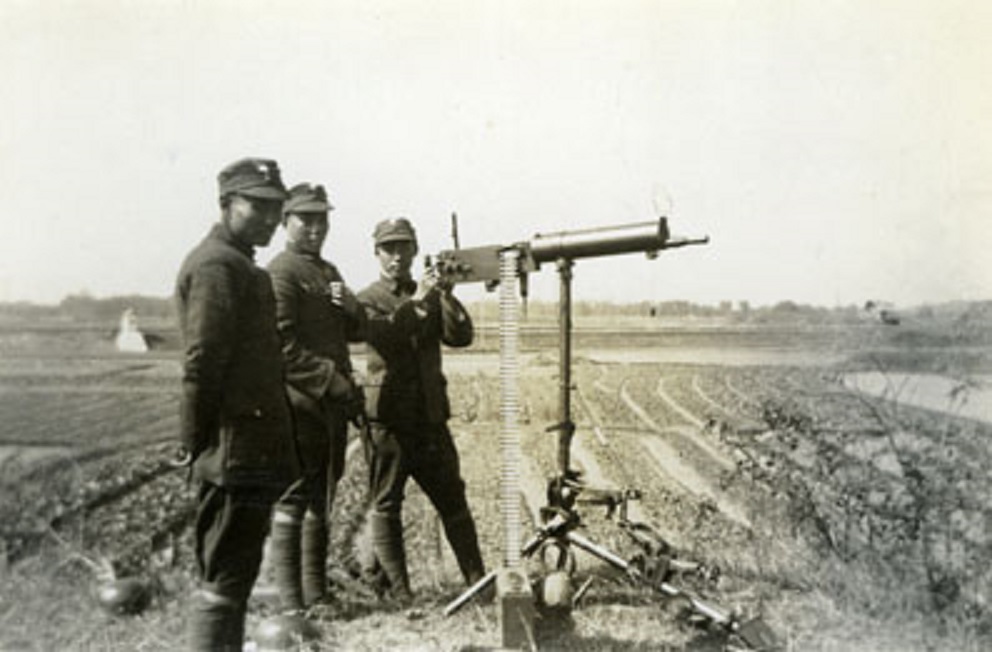 When war broke out between China and Japan in the 1930s, tens of thousands of foreigners became unwilling spectators of the bloody events. Among the witnesses were Presbyterian missionaries from New Zealand, who found their activities increasingly under stress, especially after the Japanese invaders moved south in 1938, forcing the New Zealanders to work under Japanese military supervision. “Although no physical ill-treatment took place, staff were subjected to a myriad of new bureaucratic regulations and often outright harassment. Untold patience was required of Mission staff,” according to a website dedicated to the history of the New Zealand mission.
When war broke out between China and Japan in the 1930s, tens of thousands of foreigners became unwilling spectators of the bloody events. Among the witnesses were Presbyterian missionaries from New Zealand, who found their activities increasingly under stress, especially after the Japanese invaders moved south in 1938, forcing the New Zealanders to work under Japanese military supervision. “Although no physical ill-treatment took place, staff were subjected to a myriad of new bureaucratic regulations and often outright harassment. Untold patience was required of Mission staff,” according to a website dedicated to the history of the New Zealand mission.
In the period from 1938 to 1941, the missionaries ran a refugee camp in south China and saved countless lives through the distribution of rice. However, work became drastically more difficult after war erupted between Japan and the western powers in December 1941, and the following year the missionaries were put to internment camps, being liberated only after the defeat of Japan in 1945.
While carrying out their work in China, the New Zealand missionaries also took pictures of the nation’s war effort against Japan in order to create awareness at home of an increasingly desperate situation. Some of the photos, including the one above showing Chinese soldiers near the mission station, are reproduced here with the kind permission of the Presbyterian Research Center. The center is National Agency of the Presbyterian Church of Aotearoa New Zealand, and it is affiliated with the Hewitson Library. The website can be found here, while the photos form China during the war with Japan are available here.
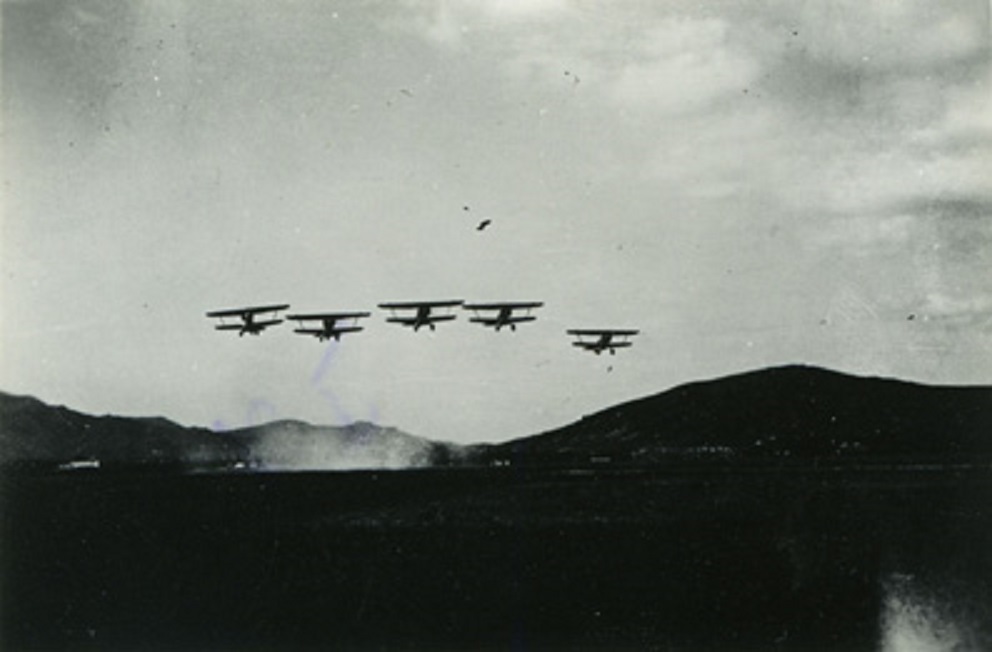
Sea (scout) bi-planes taking off from a base near Guangzhou, c.1938
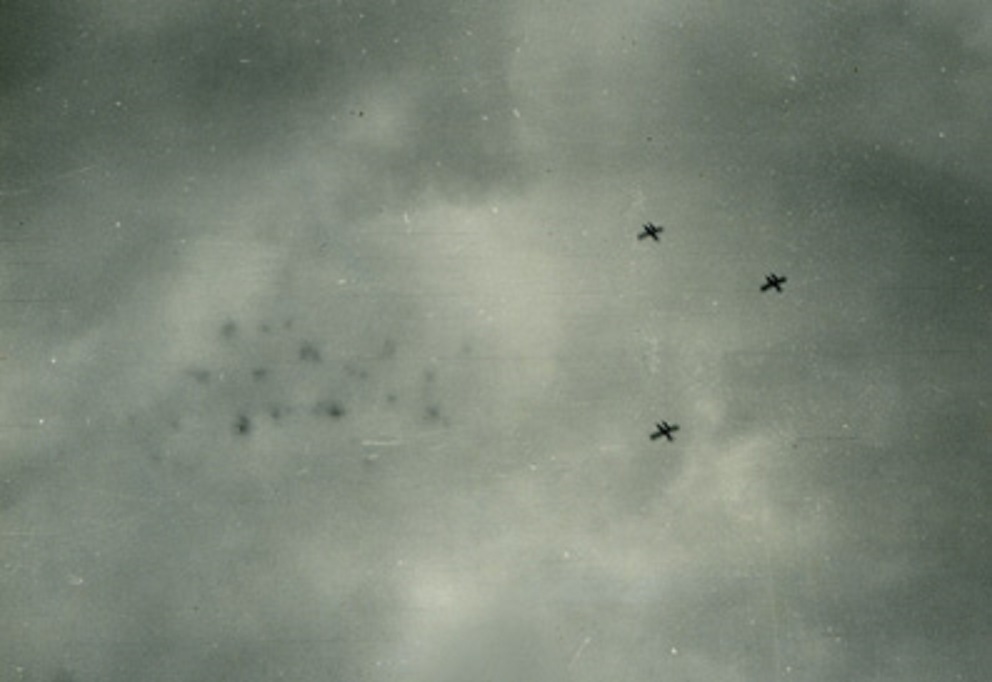
Smoke from ack ack guns trailing three scout planes, 1938
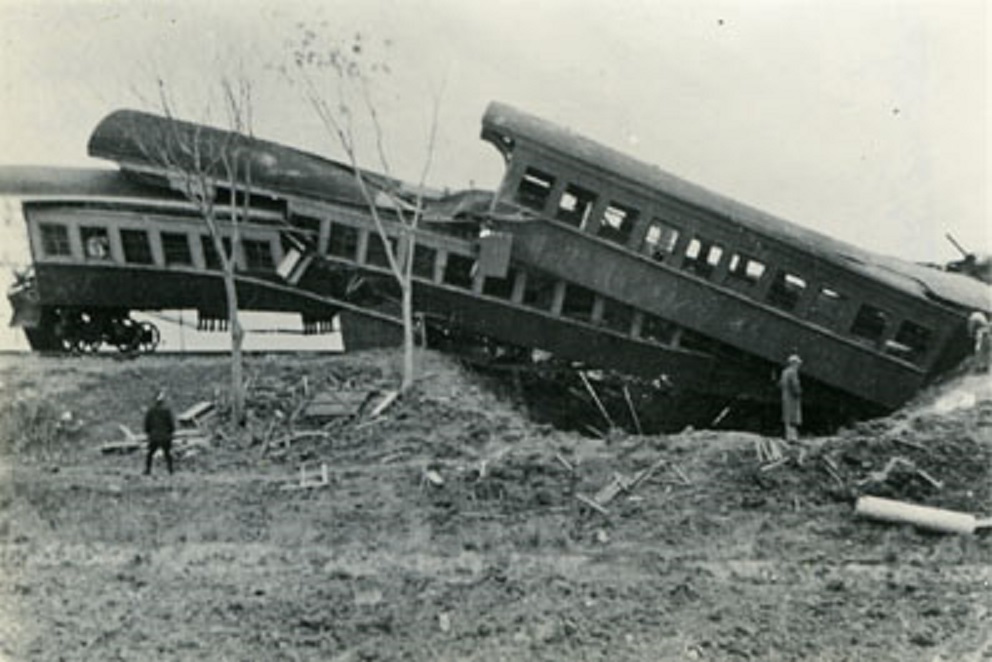
Graphic damage to a derailed train, the carriages having ‘telescoped’ into each other after running into a bomb hole on the Canton to Hankow main line at Kong Chuen, only 400 yards from the Mission Compound (located 40 miles east of Guangzhou). Jan 1938
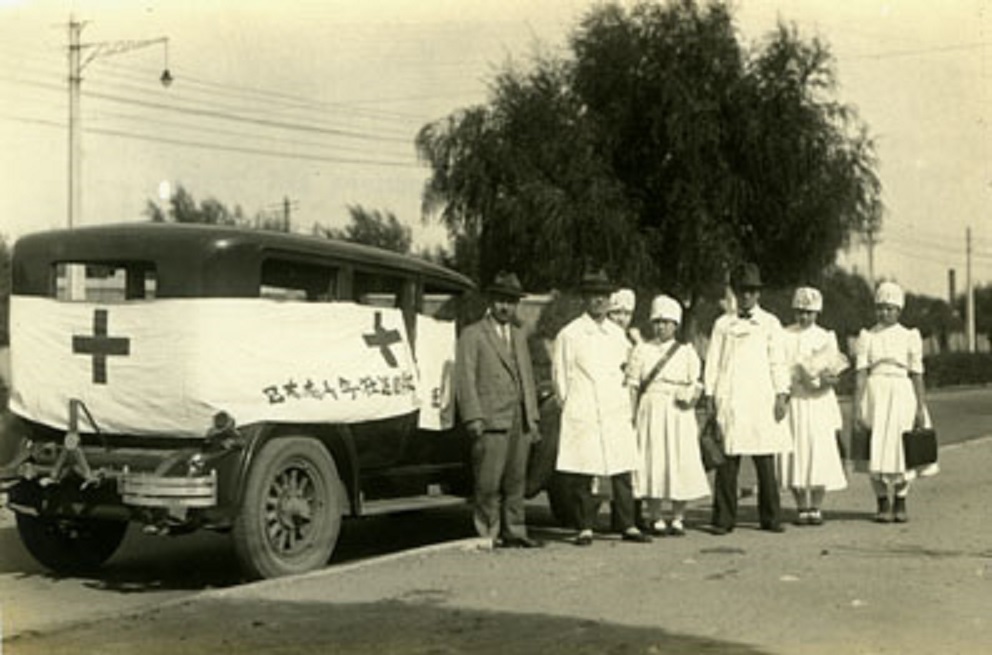
Japanese Ambulance Corps at Mukden [now known as Shenyang] standing by their vehicle clearly marked with a red cross symbol. Mukden was then part of the Japanese puppet state of Manchukuo in Northern China. The following three images would appear to have been taken by the Japanese for ‘propaganda’ purposes, c.1938.
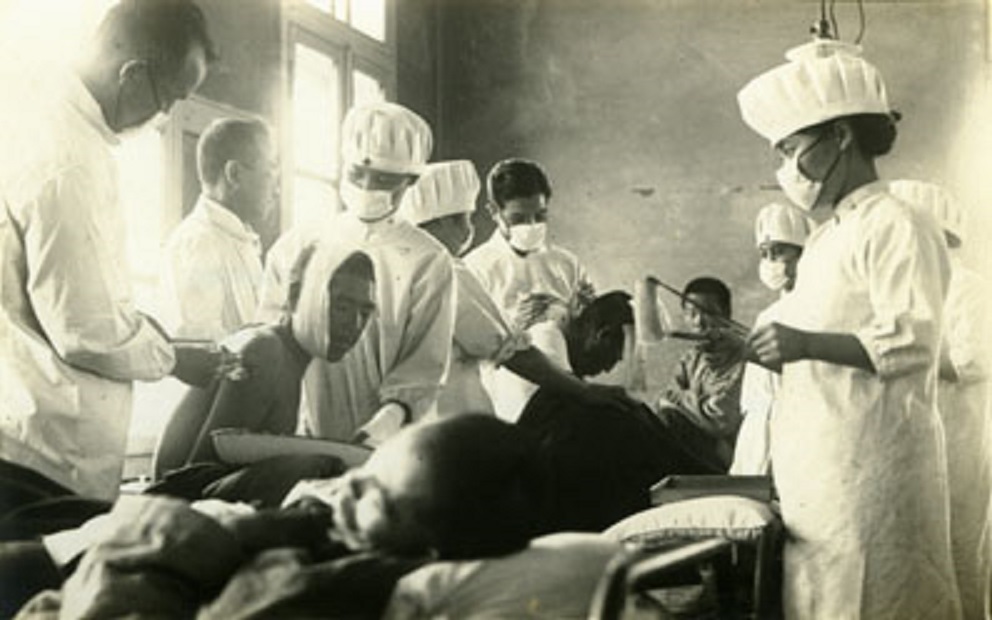
Chinese Doctors and Nurses attending to wounded Chinese soldiers brought into the Japanese Red Cross Hospital at Mukden, c.1938. They appear to be Chinese puppet soldiers fighting in the Manchukuo Army.
x
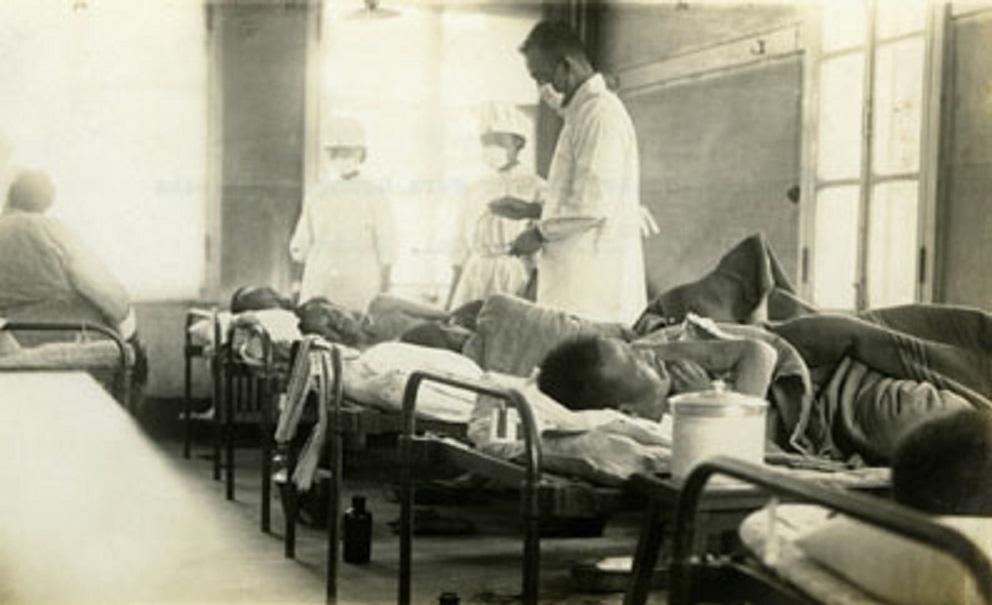
Wounded Chinese soldiers lying in beds at the Japanese Red Cross Hospital Mukden. A Doctor and two Nurses in attendance, c.1938.
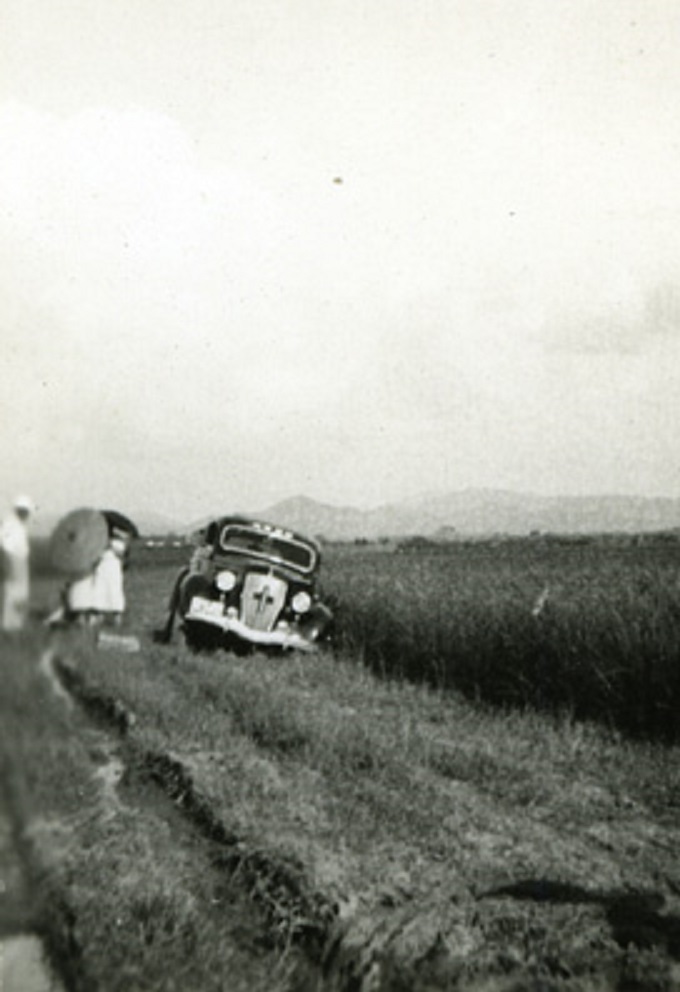
“Sitting Ducks”: At some considerable risk to the occupants, Sr Annie James’ Ford V8 car (complete with cross on radiator), is shown bogged down in a rice field after having been driven off the road to avoid a mud (bomb?) hole. Only a few miles before, and in what could have easily ended up a tragic situation, the car had been shot at then bombed by Japanese planes, forcing the occupants to dive for cover into ant infested and muddy rice fields. It is fortuitous that the Japanese pilots were such bad shots. The indomitable Sr James had in fact been more worried about losing her precious car than her life! The party included Sr James, the Rev EG (Paddy) Jansen and the Director of Missions and his wife, the Rev Don and Mrs Phoebe McDiarmid, who were then visiting our Chinese Mission Field. Due to the worsening situation and inherent risk, the Director’s visit was cut short. Canton soon fell to the Japanese Military Forces. Taken 12th October 1938.
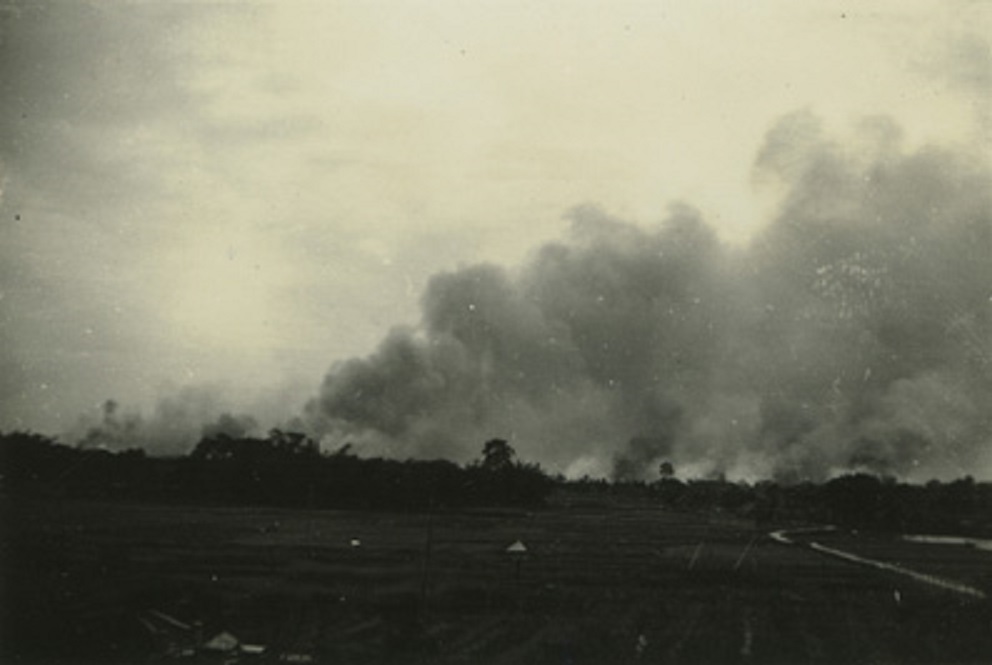
The adjoining twin towns of Kong Chuen and Ko Tong in flames after aerial bombardment from Japanese forces, 7th Nov 1938. It was at Ko Tong in 1901 that the Rev George McNeur stepped ashore from his boat and ascended the white granite steps to the village to begin the work of the New Zealand Presbyterian Church Mission in the Poon Yue District.
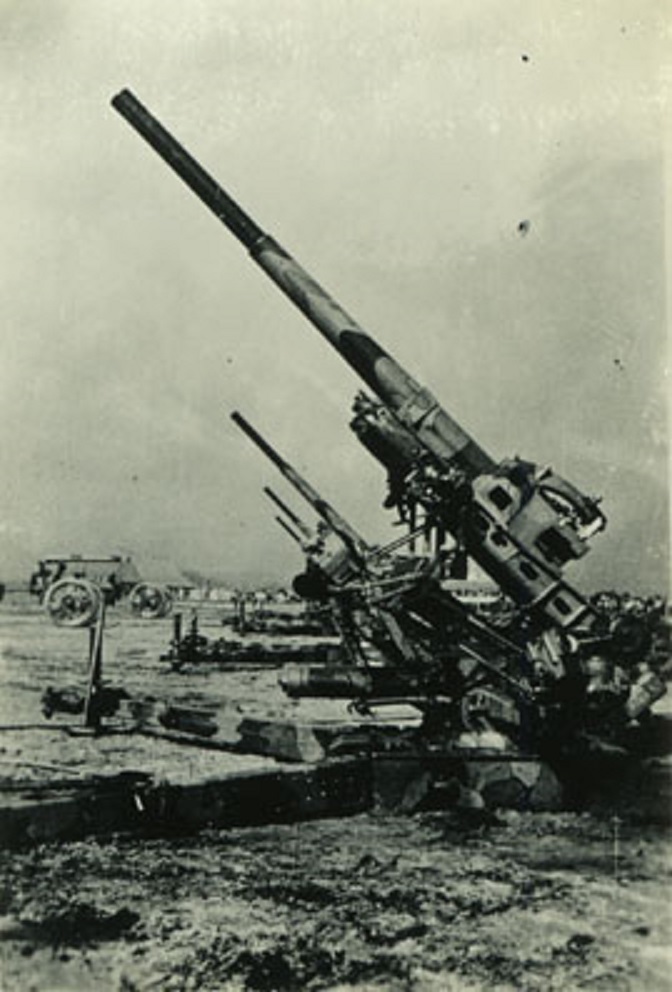
A row of Chinese anti-aircraft guns and a field tractor, all painted in camouflage paint. c.1938.



 Copyright © 2024
Copyright © 2024
Leave a Reply